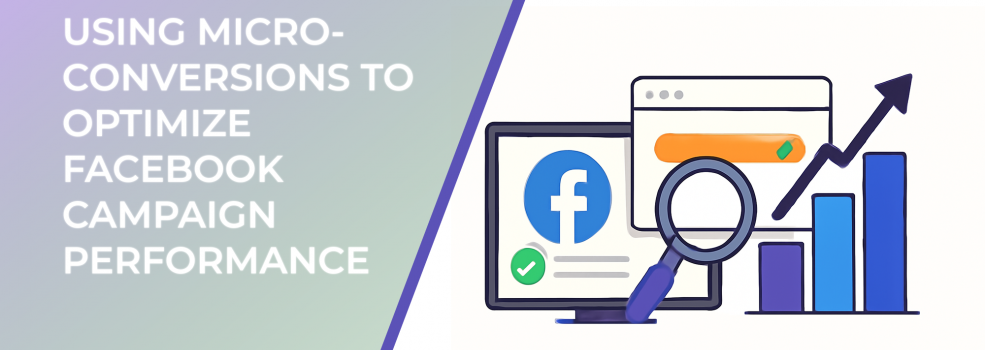Introduction: The Hidden Power of Micro-Conversions
While the ultimate goal of any campaign is conversions (purchases, signups, leads), many users interact with your brand through smaller steps first. These steps—called micro-conversions—are invaluable in optimizing campaigns, identifying strong audiences, and reducing wasted ad spend.
Examples of micro-conversions include:
-
Watching 75% of a video
-
Clicking through to a product page
-
Saving an Instagram post
-
Engaging with a Facebook group discussion
With LeadEnforce, you can leverage these behaviors to build custom audiences that reflect real user interest without relying on personal data.
1. Why Micro-Conversions Matter in Campaign Optimization
Most users won’t convert immediately. Tracking micro-conversions allows you to:
-
Identify which creatives and messages are resonating
-
Recognize high-intent behaviors earlier
-
Reduce cost per acquisition by reallocating budget to warm audiences
Studies show that campaigns optimized for micro-conversions can lower CPA by up to 30% in early-funnel stages.
2. Building Smart Audiences from Micro-Conversions with LeadEnforce
LeadEnforce enables you to build Facebook audiences based on engagement with:
-
Facebook groups tied to your product or niche
-
Instagram profiles that influence your target market
For example, if someone joins a niche SaaS or fitness group and clicks on related content, they’re showing a micro-conversion signal you can retarget.
3. Micro-Conversions to Track and Optimize For
Here are a few key micro-conversions that signal deeper intent:
-
Video views (50% or more)
-
Post engagement (likes, shares, saves)
-
Profile or page visits
-
Outbound clicks to your site
-
Engagement in targeted Facebook groups
This table highlights the top micro-conversions for Facebook ads, their impact on campaign performance, and recommended actions for optimizing engagement and conversion rates.
While these don’t directly generate revenue, they provide a data-backed path toward final conversion.
4. Keyword-Driven Content and Audience Cues
Use keyword research to identify topics and communities users are engaging with. Some high-performance keywords include:
-
"facebook ad optimization"
-
"campaign budget optimization"
-
"facebook ads advice"
These help locate Facebook groups and Instagram profiles where micro-conversions are likely to happen.
5. Micro-Conversions Improve Campaign Budget Optimization
Campaigns that only optimize for final conversions tend to overspend early. By layering in micro-conversion events, you can:
-
Reallocate budget to audiences showing early signs of interest
-
Use advantage campaign budget more efficiently
-
Prevent premature scaling or pauses
Explore more in Factors That Influence the Cost of Facebook Ads.
6. Common Mistakes in Micro-Conversion Strategies
Even with the right concept, some advertisers go wrong by:
-
Overloading the funnel with too many signals
-
Retargeting users too early without frequency control
-
Failing to align micro-conversions with final goals
See examples of poor setups in Facebook Ad Mistakes – All You Should Know.
Conclusion: Optimize Beyond the End Goal
Micro-conversions are not just optional signals—they’re strategic insights into user behavior. With LeadEnforce, you can build audience segments based on real, privacy-friendly engagement that helps optimize campaigns from the first click to the final checkout.
For more strategies on building smarter audiences, visit When Your Audience Is Too Small... and Simple Questions for Measuring Facebook Ad Effectiveness.

